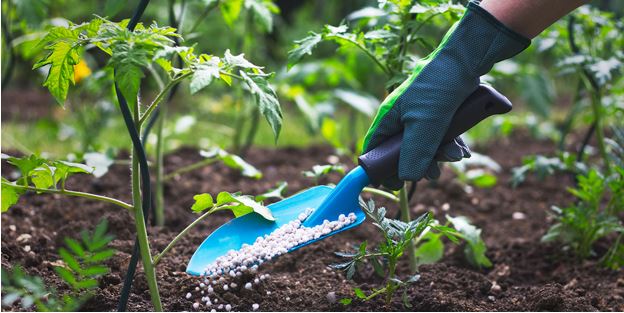
Fertilizer are added to the crops to create enough food to sustain the people of the world. Fertilizers enrich crops with nutrients such as potassium and phosphorus, nitrogen, and potassium that allow the plants to grow larger quicker and generate more calories. Nitrogen, in particular, is a vital nutrient that helps the development of all living things on Earth. Nitrogen is everywhere and is present in around 78 percent of the air you breathe.
But, animals and plants cannot utilize the nitrogen gas found in the air. To grow, plants need nitrogen compounds from the soil. They can be created in nature or through fertilizers. However, the use of too much fertilizer can lead to the emission of greenhouse gases that are harmful to the atmosphere and the eutrophication and pollution of our waterways. Scientists are trying to discover ways to lessen the environmental harms caused by fertilizers without decreasing the quantity of food we produce by using fertilizers.

What is FERTILIZER?
Fertilizers are any substances or other material that is added to soils that encourage the growth of plants. There are a variety of fertilizer types that have nitrogen (N) as well as phosphorus (P) and potassium (K). The fertilizers that are sold in retail stores are marked with an N-P-K ratio printed on their packaging. Fertilizers are used all over the globe to maintain lawns and also to grow more crops in fields of agriculture. Fertilizers can be classified into three categories:
- The mineral fertilizers(phosphorus and potash) are extracted from the Earth and then processed chemically before applying.
- Organic fertilizers(manure and compost) are created from animal feces and animal or plant decomposed matter.
- Fertilizers for industry(ammonium phosphate or urea, ammonium Nitrate) are manufactured in industrial settings by humans via chemical reactions.
- Although organic and mineral fertilizers have boosted crop yields for many years, industrial fertilizers are a relatively recent development. Yet industrial fertilizers are by far the most commonly employed fertilizers currently.
Why do we need NITROGEN-CONTAINING FERTILIZERS?
Nitrogen is among the elements which, also known as nutrients, all living creatures (microorganisms and plants, and animals) require to thrive. Even though there’s plenty of nitrogen around us (~78 percent of our air), The majority of nitrogen found on Earth is in the form of an odorless and colorless gas known as nitrogen gas (N 2). Unfortunately, animals and plants can’t directly make use of nitrogen gas. Humans get our nitrogen from the foods we consume. Foods with high protein levels like fish, meat, or nuts contain a lot of nitrogen. Plants obtain nitrogen from the soil, and nitrogen has been identified as the second most commonly used element that can limit the growth of plants. The two methods in which nitrogen gas can be transformed naturally into «fixed» in nitrogen-containing substances found in soil with no intervention by humans.
- Lightningstrikes create enough energy to break nitrogen gas from the atmosphere to create nitrogen-containing compounds absorbed by the soil.
- Biological nitrogen fixationCertain microorganisms can utilize nitrogen gas as an energy source. These specially designed microorganisms convert nitrogen gas into ammonium (NH 4 +) and are referred to as «nitrogen fixers.» Some microorganisms that fix nitrogen are found in soil, and some may establish a close connection to the roots of specific plants, including beans and clover.For more information square about, click to 93 m in feet that would be the right place for you.









